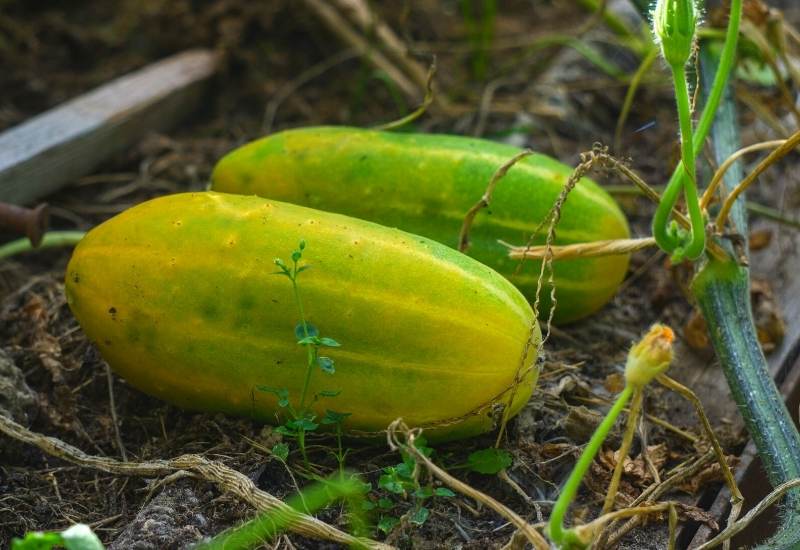
Cucumbers are a fairly easy plant to grow and can produce large quantities of firm, green vegetables. However, your harvest will sometimes be blighted by an unsightly (and unsavory) yellow cucumber. Unfortunately, there are several reasons your cucumbers might turn yellow.
Letting your cucumbers become overripe on the vine is the most common cause of yellow cucumbers. Lack of water can also be a culprit, as is the lack of nutrients in the soil. Other reasons can be diseases or poor pollination.
Some of these issues can be easily rectified, but in some cases, you are better off pulling the entire plant and starting over.
So, If your cucumber plants start to show signs of trouble, like fruits turning yellowish or orange color, knowing how to fix yellow cucumbers will keep your harvest on track.
Keep reading to learn more about how to identify what is causing the issue and how to deal with it.
6 Reasons Your Cucumbers Are Turning Yellow On The Vine
There are many factors that result in yellowing cucumbers and each type has different solution.
Let’s find possible reasons why your cucumbers are turning yellow and what can be done.
1. You Are Growing A Yellow Cucumber Variety
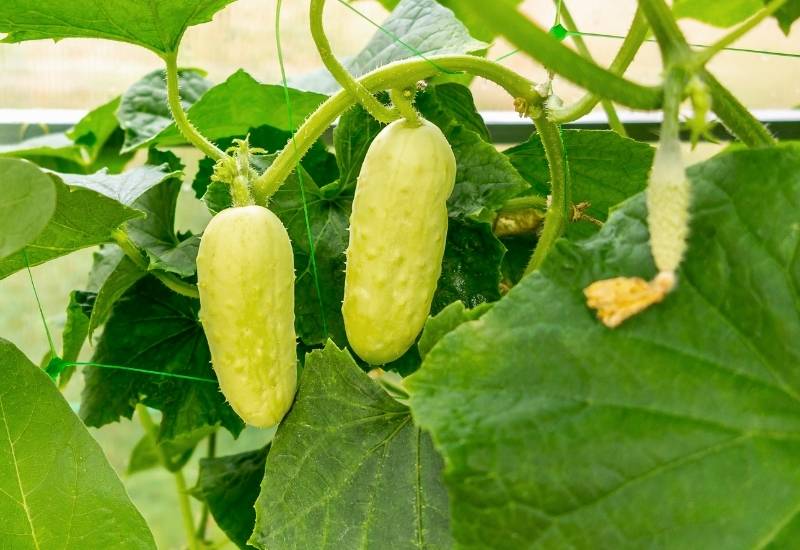
Perhaps this might be obvious, but are you growing a yellow variety? Some cucumber varieties have yellow or white coloured skin when they are mature.
If this is the case, your cucumbers are supposed to be yellow and you have nothing to worry about.
If one of your plants starts producing yellow cucumbers, then maybe a seed from a yellow variety ended up in the wrong seed packet. If this is the case, you have nothing to worry about, so sit back and enjoy your colorful diversity.
However, if you are finding one or two cucumbers scattered amongst the plants then there is probably something else afoot. Keep reading to find out the culprit.
2. Overripe Cucumbers
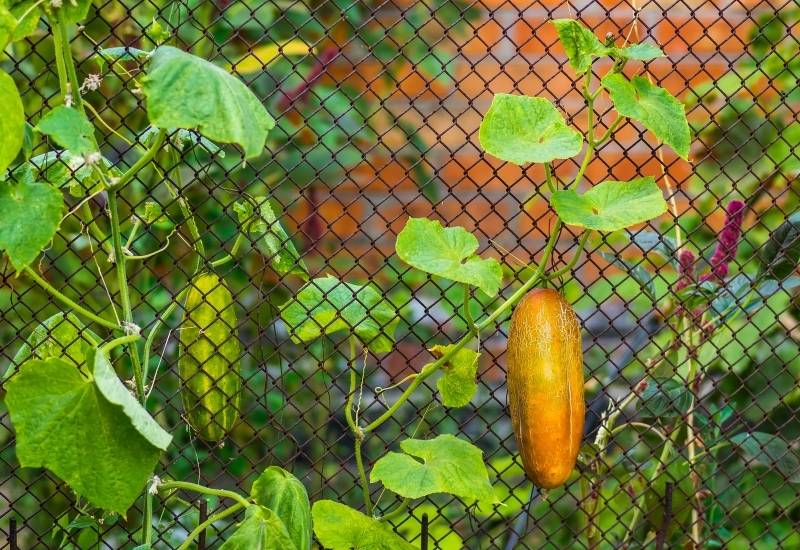
The most common cause of yellow cucumbers is that they are overripe. The cucumbers that we eat or buy in stores are considered horticulturally mature which is when the flavour and texture are ideal for eating.
If you leave a cucumber on the vine, it will continue to ripen to become botanically mature and will start to produce seeds for future propagation. As a cucumber becomes botanically mature, the chlorophyll in the skin fades and the cucumber turns yellow.
From an eating point of view, a mature, yellow cucumber is considered overripe. It will be very bitter and not worth eating.
Size is not generally a quality looked for in cucumbers, though some varieties can grow quite large. Instead, cucumbers are grown for quality and quantity.
Since most cucumber varieties are ready for harvest in 50 to 60 days after transplant, the best way to avoid yellow overripe cucumbers is to check your plants every day and pick them continually.
There are a few things you can do with overripe cucumbers if you find any:
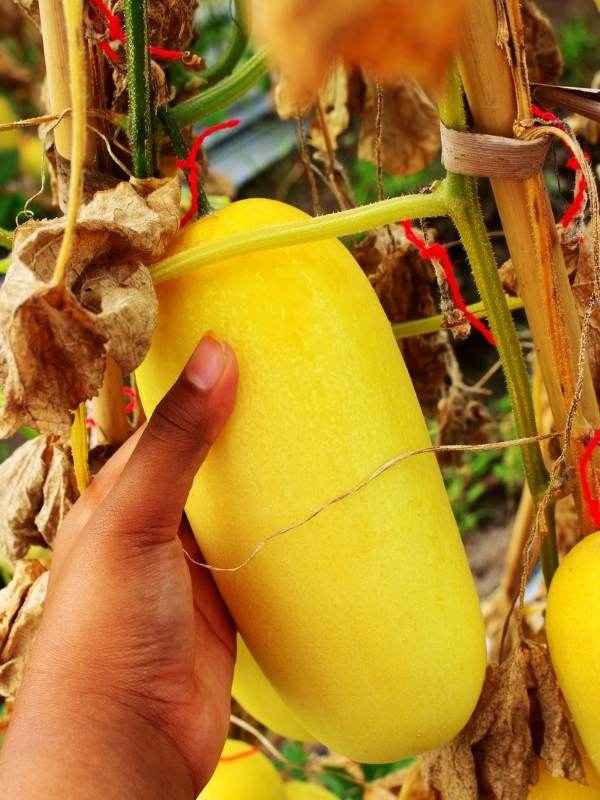
3. Nutrient Deficiencies
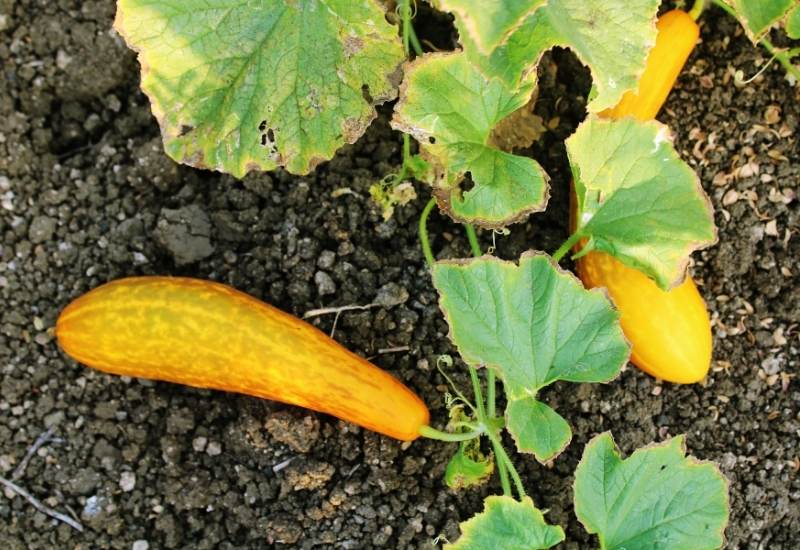
Cucumbers are heavy feeders, which means they need a lot of nutrients to grow healthy and produce lots of fruits.
Growing cucumbers in poor soil, or in the same spot year after, year can quickly deplete the soil by using up all the nutrients. If the plant is not fed sufficiently, it can produce poor-quality cucumbers that can turn yellow.
Cucumbers generally do best when the soil has a balance of nitrogen, phosphorus, and potassium. Nitrogen is responsible for promoting healthy vegetative growth.
Phosphorus is vital to plant growth and helps with photosynthesis and converting starch to sugar, while potassium affects how water, carbohydrates, and nutrients move inside the plant. It is important to keep a high level of these three nutrients in the ground.
Here are suggestions to keep your soil healthy and your plants well-fed.
4. Lack Of Water
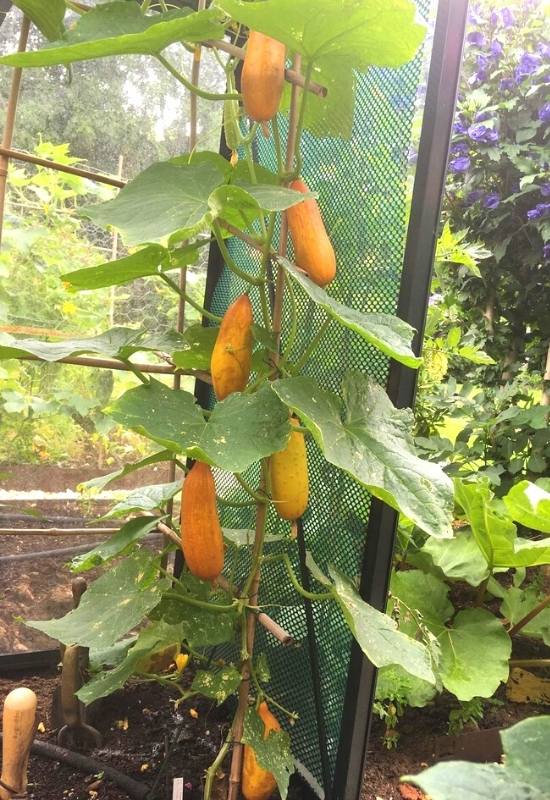
Not enough water, or inconsistent water, can cause the cucumbers to wither and yellow. Cucumbers have a shallow root system and insufficient watering means there won’t be enough moisture available at the level of the roots.
Be particularly careful if you are growing in containers, as the soil in pots will dry out faster than it does in the garden. As a word of warning, make sure you do not over water your cucumbers since this can lead to certain diseases as we will discuss below.
However, there are many ways you can conserve water consumption and still keep the soil around your cucumbers damp.
5. Plant Diseases
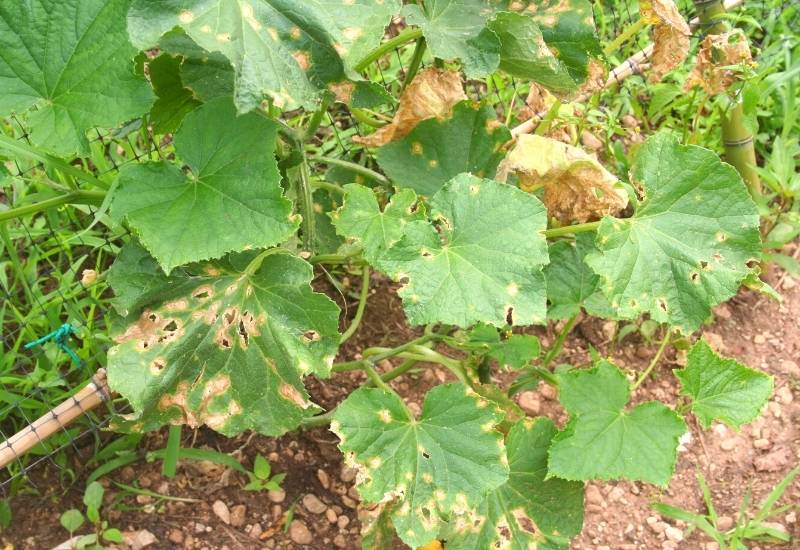
In most cases, the health of a cucumber is tied to the health of the vine itself. Cucumbers are susceptible to a whole bunch of different diseases, and there are several that can cause your cucumbers to yellow.
If any disease is particularly bad in your area, consider growing a disease-resistant cucumber variety.
Cucumber Mosaic Virus
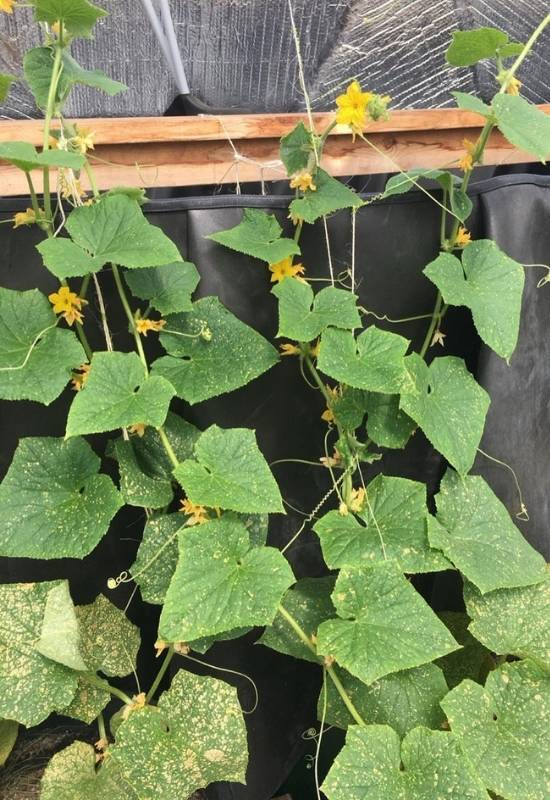
The Cucumber Mosaic virus is one disease that can lead to yellow cucumbers. When the Cucumber Mosaic virus attacks your plant, the cucumbers produced will be stunted and have yellow and white mottling. You can also identify this issue as the leaves on the plant will also have a yellow “mosaic” pattern, hence the name.
There is no cure for the cucumber mosaic virus and any affected plants should be destroyed before they spread the virus to the rest of your plants. Do not put the disease plants into the compost.
However, there is still hope. This virus is spread by aphids and beetles, so stopping the insects can stop the virus.
Here are three ways to protect your plants from aphids and beetles and help prevent the Cucumber Mosaic virus.
Bacterial Wilt
Bacterial wilt could be another culprit for your discoloured cucumbers. It is generally caused by the striped cucumber beetle.
Fungal Diseases
Many fungal diseases can cause your plants to produce yellow cucumbers. Fungal diseases can usually be helped by improving air circulation around your plants.
6. Yellow Cucumbers Are Often Caused By A Lack Of Pollination
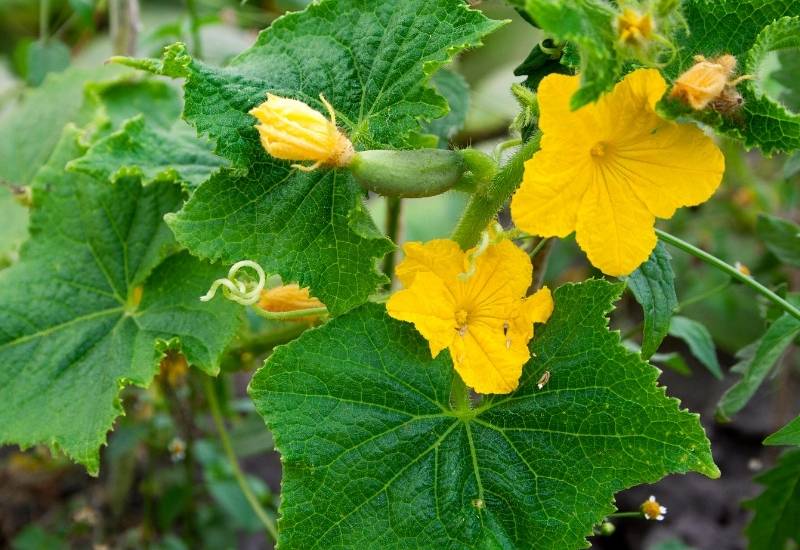
A cucumber will form behind a female flower. If this flower is not pollinated, or if it is pollinated poorly, the cucumber will yellow, shrivel, and fall off the vine.
Here a few ways to ensure your flowers are pollinated.
Conclusion
The joy of vegetable gardening culminates in the abundant harvest, yet this joy will be tainted as you watch your cucumbers turn yellow and become inedible.
Hopefully, this article has given you enough information to identify the cause of your unsightly yellow cucumbers, and you will be able to fight this battle naturally and make your garden a cornucopia of healthy, delicious food.

Written By
Amber Noyes
Amber Noyes was born and raised in a suburban California town, San Mateo. She holds a master’s degree in horticulture from the University of California as well as a BS in Biology from the University of San Francisco. With experience working on an organic farm, water conservation research, farmers’ markets, and plant nursery, she understands what makes plants thrive and how we can better understand the connection between microclimate and plant health. When she’s not on the land, Amber loves informing people of new ideas/things related to gardening, especially organic gardening, houseplants, and growing plants in a small space.

Can u tell me what I need to get for cucumber they are yellow I don’t no what to do about
It depends on what the problem is. In general, break out the band aid, fertilizer, a 10-10-10 mix. Also consistent watering considering the shallow root system. If your soil dry’s out quickly, mulch it.
Thank you!
How do you fix overwatered cucumbers? They are in a raised outdoor bed. It has been raining here every day for weeks. They went from “not ready to harvest” to “overwatered rot” very quickly.
You can improve drainage by adding humus material to the plant soil, such as decomposing leaves or straw, or by adding sand to the soil.